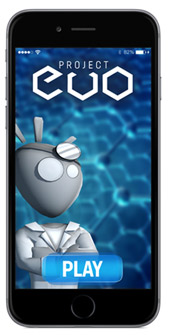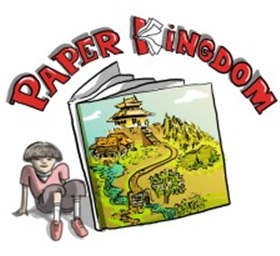How Big Pharma is using gamification for marketing communication
Opinion
 It is the age of the ‘Digitized Self’. From social media profiles to banking needs and to shopping frenzies stakeholders across industries are becoming digitized.
It is the age of the ‘Digitized Self’. From social media profiles to banking needs and to shopping frenzies stakeholders across industries are becoming digitized.
The same holds true for the healthcare and pharmaceuticals industry as well, the web permeates every single vertical from the sales force using latest technology to health care professionals engaging in digital connects and patients demanding more updated and regular interactions. However pharma has for long stayed behind the curve and is now just beginning to explore the possibilities that technology has to offer.
The use of gamification has become the newest buzzword in the marketing industry across retail, social and even healthcare. For those not familiar with the concept, gamification is used to tap into consumer behavior using challenging techniques to mold them into a desired behavioral pattern.
Fairly recently, pharma has begun to use gamification to strengthen relationships with its stakeholders, mainly with patients and health care professionals. We have seen the popularity of activity trackers like FitBit, which track a person’s exercise, calorie intake, and other data. Some of these Apps even give a virtual trophy, bonus points and rank your performance against your friends.
Big Pharma using gamification for drug development and clinical trials
That the pharmaceutical and healthcare industry lags behind other sectors to fully utilize the opportunities technology has to offer has probably become an industry image statement.
However, some of the Big Pharma are now pushing the boundaries and breaking the barriers to explore newer avenues that technology and the digital outreach has to offer, as is evident from a recent report released titled “Indian Pharma Digital health Report 2015”.
Big Pharma has been taking a stab at gamification for drug development and clinical trials as well. At D Yellow Elephant we focus on Pharmaceutical and Life-sciences industry offering specialized marketing communications services by integrating technology, medical sciences and communications. We use Holograms, virtual reality, gamification platforms, touch less interactions and app developments customized for Indian Pharma requirements.
Gamification for detecting Alzheimer’s
 Besides engagement, which is a prime goal for both the retail and clinical spaces, gamification could also play a role in helping pharma diagnose and determine the severity of certain diseases. For example, at the beginning of 2014,Pfizer teamed up with Akili Interactive Labs to conduct a clinical trial using a video game, “Evo Challenge,” to detect early signs of Alzheimer’s disease.
Besides engagement, which is a prime goal for both the retail and clinical spaces, gamification could also play a role in helping pharma diagnose and determine the severity of certain diseases. For example, at the beginning of 2014,Pfizer teamed up with Akili Interactive Labs to conduct a clinical trial using a video game, “Evo Challenge,” to detect early signs of Alzheimer’s disease.
The game challenges patients to navigate a series of obstacles as researchers determine how well users can pay attention and make decisions when confronted with other distractions. Games have also offered a new way for researchers to explore movement in muscular dystrophy patients.
England Research Institutes/NIH, for example, recently launched a video game called “The Paper Kingdom” for kids’ between 8-14 years old. The game was created to confront and eliminate any common misconceptions kids might have about clinical trials.
For pharma, gamification means designing apps that maybe don't always look like games but operate on game theory, which in its simplest form is how people make interactive decisions.
Sanofi’s Monster Manor
 From a media perspective, when Boehringer Ingelheim, launched Syrum with Facebook, it got mixed reviews, both from the users and the media. However fairly recently gamification efforts by global giants like Roche (Aiir virtual world created for child asthma patients in a clinical trial, and Sanofi’s Monster Manor aimed at kids with type 1 diabetes, have won awards for innovation.
From a media perspective, when Boehringer Ingelheim, launched Syrum with Facebook, it got mixed reviews, both from the users and the media. However fairly recently gamification efforts by global giants like Roche (Aiir virtual world created for child asthma patients in a clinical trial, and Sanofi’s Monster Manor aimed at kids with type 1 diabetes, have won awards for innovation.
This has directly lend a huge credibility to the corporate brand value, as well as positioning the organizations as thought leaders and first movers in innovations in communicating with its stakeholders.
Gamification for disease education and brand awareness
For Pharma firms, gamification promotes disease education for people playing it, whilst also helping them filter their marketing messages for its ongoing disease awareness campaigns, which are carefully wrapped within the structural design of the game.
On the face of it, pharma developed games like Boehringer’s Syrum is about explaining the pharma industry to the public, and the stresses and strains of getting drugs to market. But more specifically for Boehringer is its use as a vehicle to communicate messages about its new disease awareness campaigns to bigger audiences.
Pharma must tread carefully in these areas in India, however, as the industry is not allowed to advertise prescription medicines to the public. This is the whole reason for disease awareness campaigns, which encourage patients to think about their condition, get diagnosed and potentially be prescribed the appropriate medication.
The whole concept of gamification, can lend a positive and negative aspect to the brand, it is important for Pharma to understand the opportunities on offer first and then go all out exploring the same.
In the near future, gamification should be explored and used by the pharma industry more aggressively in the future. Healthcare has been and always is the top most priority for the consumer chain and Pharma can play a more approachable, personable and accessible role.
Chandni Dalal is Lead, Digital Strategy and Brand Experience, D Yellow Elephant.
If you enjoyed this article, you can subscribe for free to our weekly event and subscriber alerts.
Featured

PR professionals share their views on journalists publicly calling them out on story pitches

Auto blogger renders unconditional apology to Value 360 for defamatory posts

Hottest Indian startups of 2020, Paytm, Dreams 11 lead the charge: Wizikey Report




